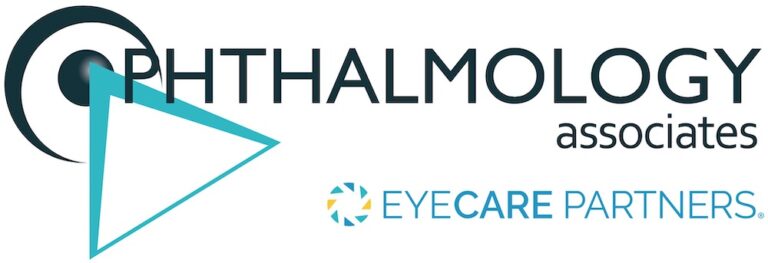
The dedicated eye care professionals at Ophthalmology Associates are committed to providing patients who suffer with glaucoma the knowledge and care you need to preserve your vision and maintain your eye health. We offer personalized glaucoma management with a variety of treatment options, including glaucoma surgery, in greater St. Louis.


Glaucoma is a group of eye conditions that damage the optic nerve, often due to increased intraocular pressure (IOP). Glaucoma is a progressive disease that can lead to vision loss and even blindness if left untreated. Early diagnosis and care are essential to preserve vision. At Ophthalmology Associates, we focus on effective glaucoma treatments to help patients in greater St. Louis maintain their eye health.

There are several types of glaucoma, including open-angle glaucoma, narrow-angle glaucoma, and secondary glaucoma. Each type has its own unique characteristics and risk factors.
Primary open-angle glaucoma (POAG) is, by far, the most common type and affects more than three million Americans and almost 60 million people worldwide. In this type of glaucoma, the eye’s drainage system, known as the trabecular meshwork, does not function correctly. This results in a gradual increase in intraocular pressure over time, which can damage the optic nerve and lead to vision loss. When we mention glaucoma without specifying a type, you can assume we are discussing open-angle glaucoma.

Glaucoma is often called the “silent thief of sight” because it typically progresses without noticeable symptoms until significant vision loss occurs. Patients with open-angle glaucoma often do not have any symptoms prior to being diagnosed during an eye exam. Patients with glaucoma that has progressed without diagnosis may notice blind spots or vision loss.
Closed-angle glaucoma has immediate and noticeable symptoms, including eye pain, headaches, nausea, and red eyes. Closed-angle glaucoma, also known as a “glaucoma attack,” is quite rare and should be treated as a medical emergency.
Early diagnosis and prompt treatment are essential to managing glaucoma. The type of treatment that is right for you will depend on the type and severity of glaucoma, as well as your overall health and preferences. Our eye doctors will create a treatment plan that is tailored to your needs.
Nonsurgical treatments may include prescription medications or laser procedures:
When nonsurgical treatments fail to control intraocular pressure, surgical intervention may be necessary to manage glaucoma effectively. Our glaucoma surgeons are experienced in different types of glaucoma surgery, including:
If glaucoma surgery is the best choice for you, your eye doctor at Ophthalmology Associates will review your treatment plan and explain all the risks and benefits of surgery. You will be given detailed pre-op instructions that may include discontinuing certain medications prior to surgery. You will also need to arrange for someone to drive you to and from your procedure.
Your eyes will be numbed with anesthetic drops before surgery. The surgical steps and length of the procedure will depend on what type of surgery you are having. Rest assured that your eye doctor will explain the treatment plan, and answer any last-minute questions you may have, prior to surgery.
Recovery will also depend on what type of procedure you have. Our team will review recovery instructions with you, including how long you should expect recovery to take. We will also review any post-op medications and scheduled follow-up appointments.
Glaucoma can occur without any known cause. Those over 60, with diabetes, or with a family history of glaucoma may be more likely to be affected by this condition.
While it’s not always possible to completely prevent glaucoma, there are several steps you can take to reduce your risk and detect it early:
Glaucoma is often a lifelong condition that requires ongoing management. Glaucoma surgery aims to manage and control glaucoma by reducing intraocular pressure to prevent further optic nerve damage. While surgery can be highly effective in lowering intraocular pressure and slowing the progression of the disease, it may not cure glaucoma. Successful surgery can help preserve your remaining vision and prevent further vision loss, but it’s essential to continue regular follow-up care to monitor and manage the disease.
Glaucoma surgery is primarily aimed at preserving the remaining vision and preventing further vision loss. While some patients may experience improved vision, especially if their high intraocular pressure was causing vision problems, the primary goal of surgery is to halt the progression of glaucoma and protect your eyesight.
Surgery for open-angle glaucoma is an option when other treatments, such as eye drops, medications, and laser therapy, fail to effectively control intraocular pressure or when the disease progresses despite these treatments. Attending regular appointments with your eye doctor and discussing any changes in vision will help determine when glaucoma surgery may be right for you.
Most health insurance plans cover glaucoma surgery because it is medically necessary. The total cost of glaucoma treatment, including out-of-pocket costs, will vary depending on the type of procedure and your individual needs.